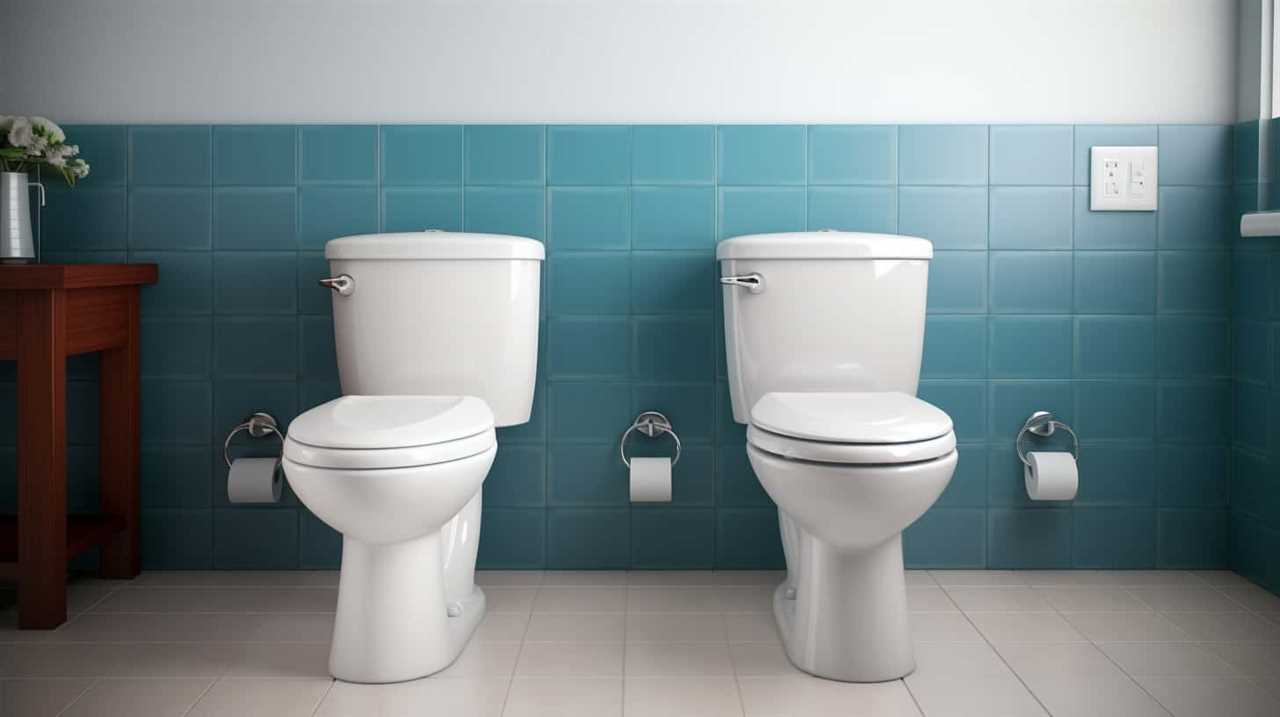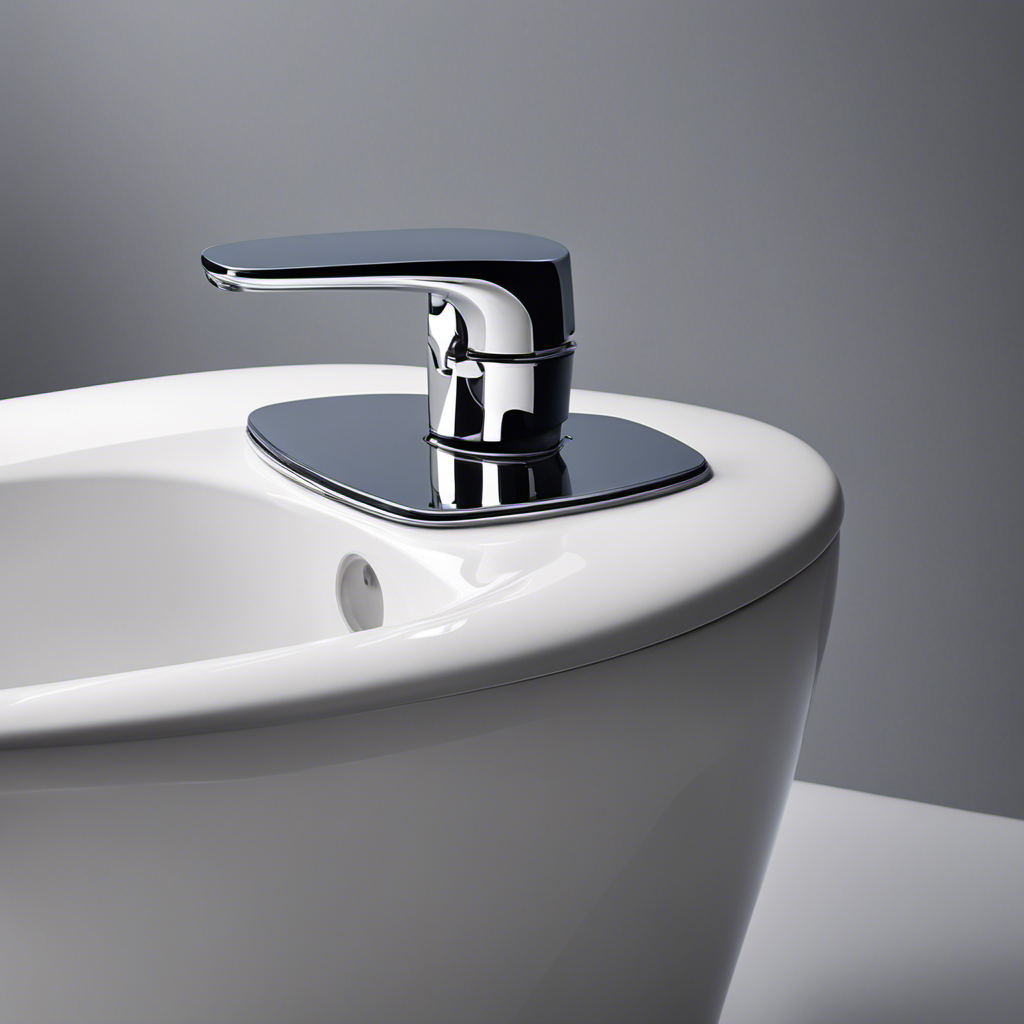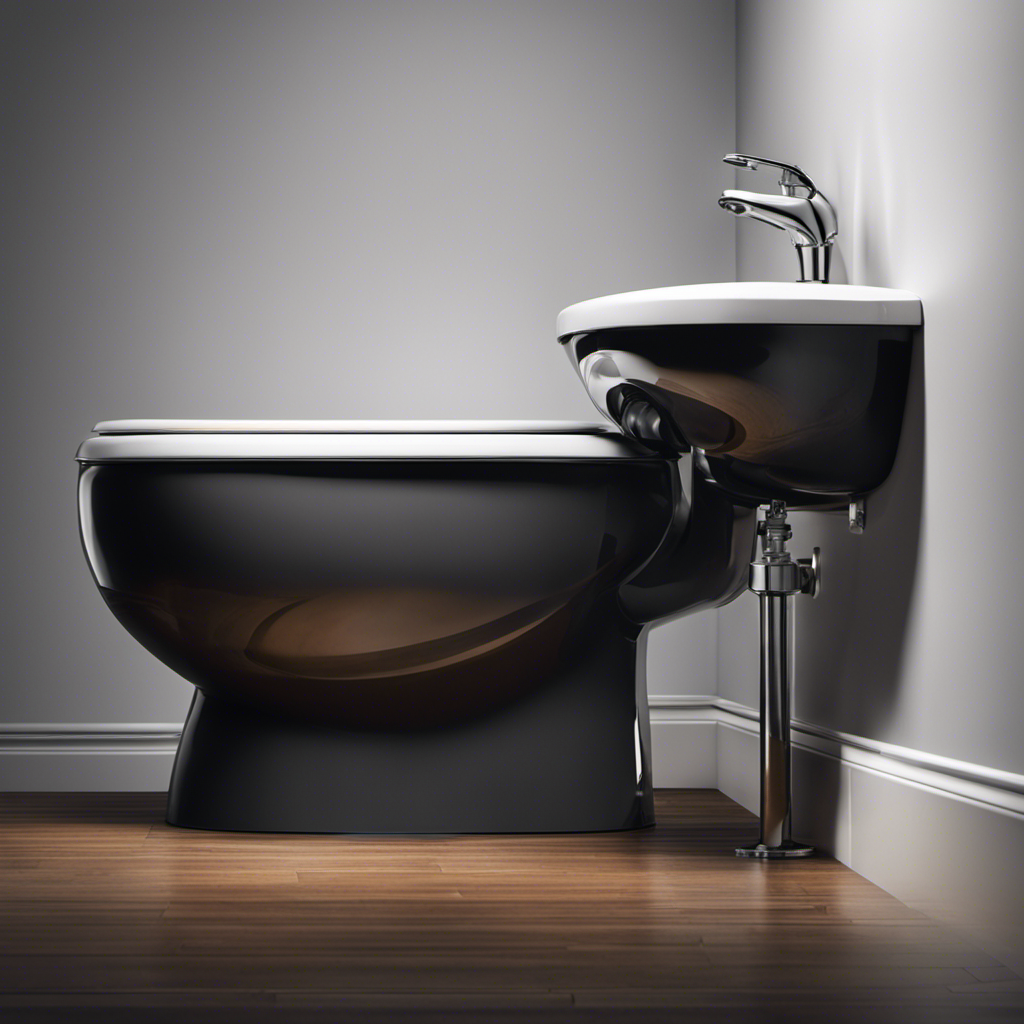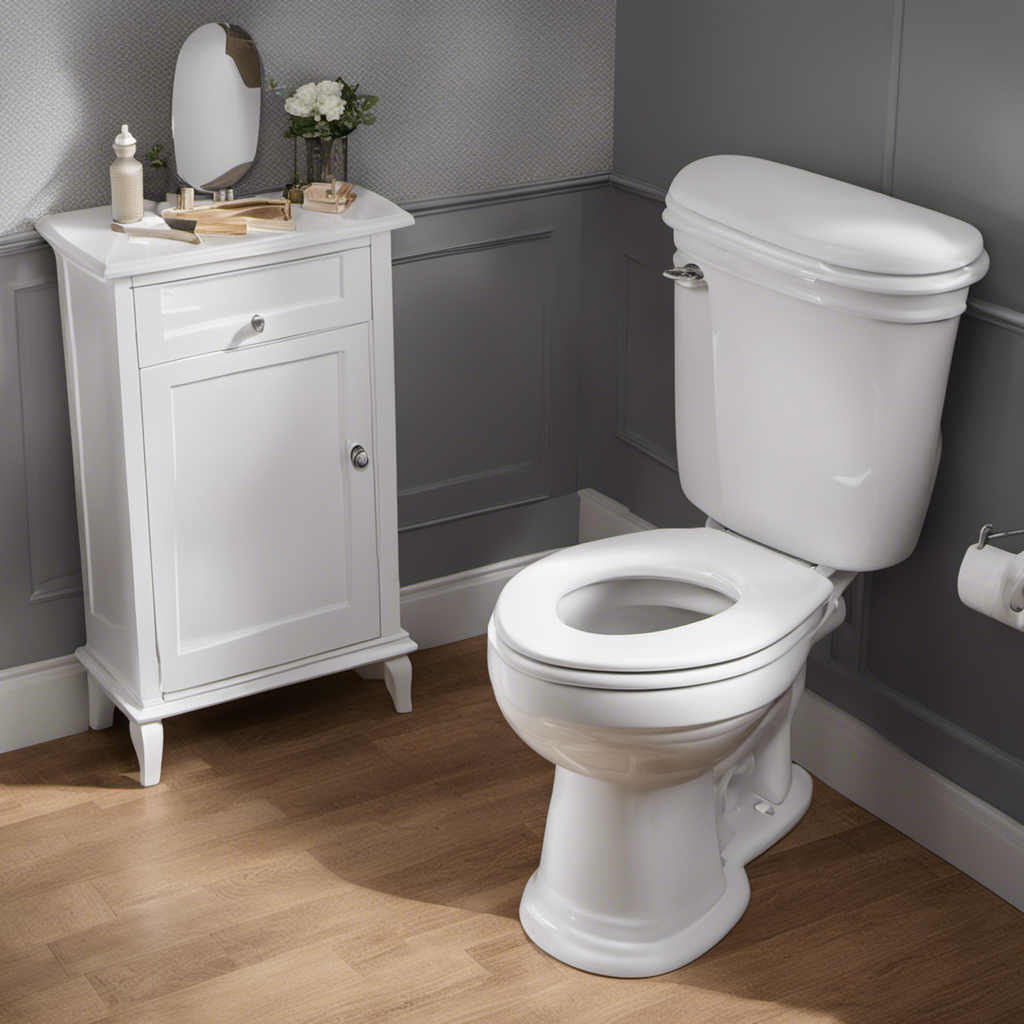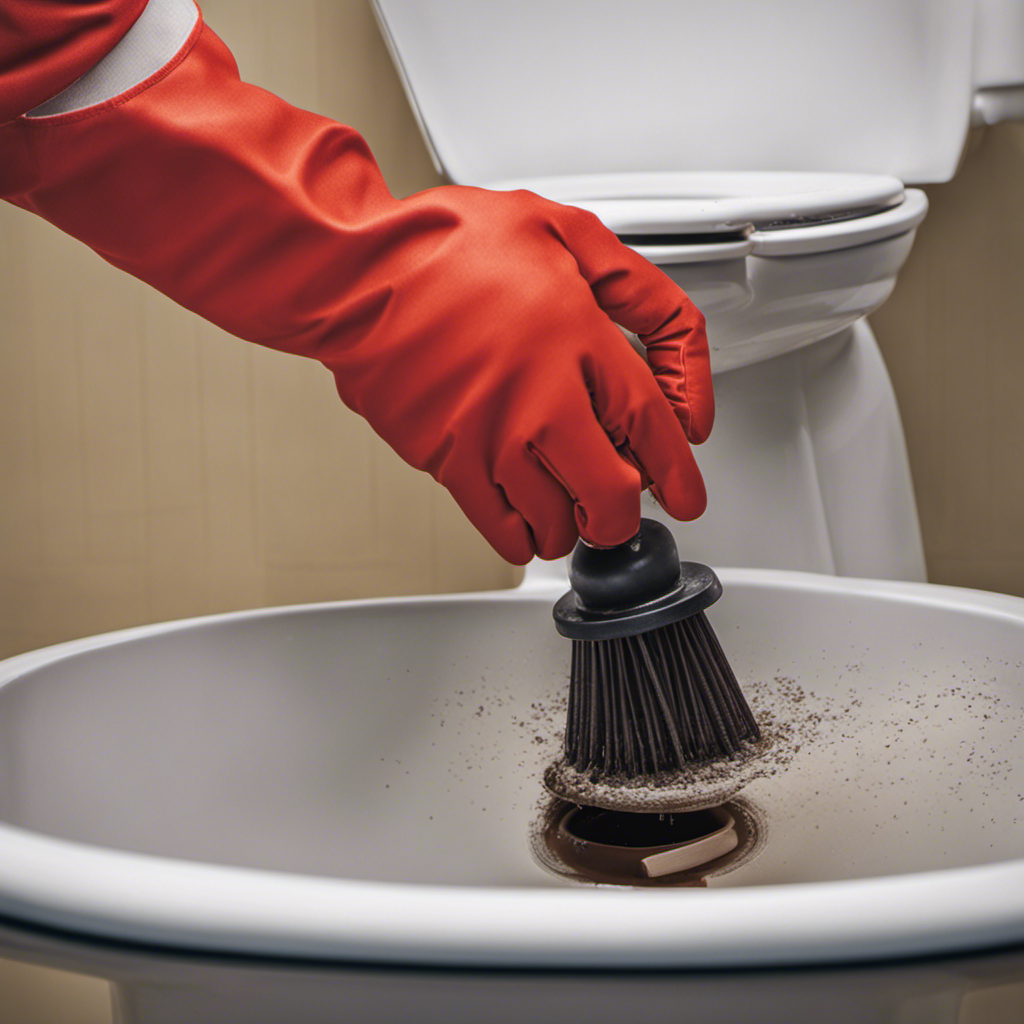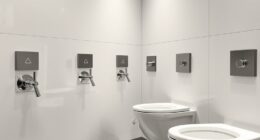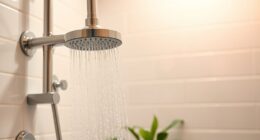When it comes to dealing with a clogged toilet, there’s nothing worse than realizing that the trusty plunger isn’t doing the trick. But fear not, because I’ve got you covered.
In this article, I’ll share some alternative tools and methods that you can try to unclog your toilet and get the water flowing again. From DIY solutions to knowing when it’s time to call in a professional plumber, I’ll provide you with all the knowledge you need to tackle this messy situation head-on.
Key Takeaways
- Common clogging mistakes include flushing non-flushable items or using excessive toilet paper.
- Signs of a serious clog include water rising to the brim, slow drainage, or gurgling sounds.
- Different methods may be required for simple blockages, such as using a toilet auger or chemical drain cleaner.
- It’s important to be cautious when using chemicals, as they can damage pipes.
Understanding the Cause of the Clog
If the plunger doesn’t work, it’s important to understand the cause of the clog. Many people make common clogging mistakes, like flushing non-flushable items or using excessive toilet paper. These actions can result in a serious toilet clog.
Signs of a serious clog include water rising to the brim when flushed, slow drainage, or gurgling sounds. Understanding the cause of the clog is crucial for effectively unclogging the toilet.
It could be a simple blockage that requires a different method, such as using a toilet auger or a chemical drain cleaner. However, it’s essential to be cautious when using chemicals, as they can damage pipes.
Alternative Tools and Methods to Try
One option to try when the plunger isn’t effective is using a drain snake. This tool, also known as a toilet auger, is specifically designed to break up and remove stubborn clogs in the toilet drain. Here are a few steps to use a toilet auger effectively:
- Insert the auger into the toilet bowl.
- Rotate the handle in a clockwise motion while applying gentle pressure.
- Continue feeding the auger into the drain until you feel resistance.
- Once you reach the clog, carefully maneuver the auger to break it up and remove it.
Another method to consider is the hot water method. Simply pour a bucket of hot water into the toilet bowl from waist height. The hot water can help dissolve the clog and potentially push it through the drain. However, be cautious not to use boiling water as it can crack the toilet bowl.
If the drain snake and hot water method don’t work, it may be necessary to explore using chemicals to unclog the toilet.
Using Chemicals to Unclog the Toilet
When the drain snake and hot water method aren’t effective, it’s worth considering the use of chemicals to clear a clogged toilet.
While there are chemical-free alternatives available, they may not always be as effective in breaking down the clog.
Chemicals, such as toilet bowl cleaners or drain cleaners specifically designed for toilets, can be used to dissolve the blockage and restore the flow of water.
However, it is important to exercise caution when using chemicals, as they can be hazardous if not handled properly.
Potential risks include skin and eye irritation, as well as damage to the toilet bowl or plumbing system if used incorrectly.
It is essential to follow the instructions carefully and take necessary safety precautions.
If chemicals are not your preferred method, there are DIY solutions for stubborn clogs that can be explored.
DIY Solutions for Stubborn Clogs
For stubborn clogs, you can try using a mixture of baking soda and vinegar to break down the blockage. Simply follow these steps:
- Pour one cup of baking soda into the toilet bowl.
- Add one cup of vinegar to the bowl.
- Let the mixture sit for about 30 minutes to allow it to work its magic.
- Flush the toilet and see if the clog has cleared.
This natural remedy is a safe and effective alternative to harsh chemicals.
However, to prevent future toilet clogs, there are a few things you can do:
- Avoid flushing large amounts of toilet paper at once.
- Dispose of sanitary products, wipes, and other non-flushable items properly.
- Regularly clean your toilet and check for any signs of clogs.
- Consider using a toilet plunger regularly to prevent build-up.
When to Call a Professional Plumber
If you notice persistent leaks or a sudden decrease in water pressure, it’s time to call a professional plumber.
Plumbing issues can range from simple fixes to more complex problems that require expert knowledge and tools.
While it can be tempting to try and fix the issue yourself, there are certain signs that indicate a serious plumbing problem that should not be ignored.
These signs include recurring clogs, sewer odors, water discoloration, and low water pressure throughout the house.
Attempting to DIY these issues can lead to further damage and costly repairs.
It’s important to know when to call a professional plumber who can accurately diagnose the problem and provide a long-lasting solution.
Don’t hesitate to seek professional help when faced with these signs of a serious plumbing problem.
Conclusion
In conclusion, unclogging a toilet can be quite the adventure. Despite our best efforts with plungers and alternative tools, sometimes the clog just won’t budge.
That’s when we turn to chemicals, hoping they will work their magic. And if all else fails, we can always try some DIY solutions, because why not?
But let’s not forget, there’s always the option of calling a professional plumber who actually knows what they’re doing.
So, next time you find yourself knee-deep in toilet troubles, remember these tips and choose your unclogging journey wisely.

